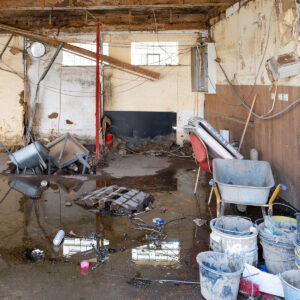17 Mar Cyclone Gabrielle

Our region has experienced a disaster unequalled in most of our lifetimes. The devastation wrought by Cyclone Gabrielle carries with it much sadness and grief due to the loss of life. The loss of homes, livelihoods and critical infrastructure has traumatised all throughout our communities. We are faced with a monumental recovery challenge.
As communities grieve, many are seeking answers to questions about what has happened, who is responsible and where accountabilities lie. Elected representatives are in the firing line, particularly around the performance of the region’s civil defence and emergency management (CDEM) structure.
The Role of the Hawke’s Bay CDEM Group Joint Committee (CDEM Joint Committee) HB Civil Defence Emergency Management Group
CDEM is governed by a joint standing committee of local councils, established in 2003 under clause 30(1)(b) of Schedule 7 of the Local Government Act 2002. The CDEM Joint Committee has the functions, powers and duties as set out in the Civil Defence Emergency Management Act 2002 (the Act).
Membership of the committee comprises the chairperson of the Hawke’s Bay Regional Council and respective mayors of The Wairoa District Council, Napier City Council, Hastings District Council and the Central Hawke’s Bay District Council.
Our mayor’s and regional council chairperson are responsible and accountable for the performance of the CDEM Joint Committee. They have fully delegated authority to vote and make decisions without recourse to their respective councils.
CDEM Joint Committee Purpose
The functions, powers and duties of the committee are specified in sections 16, 17 and 18 of the Act. These are:
(a) To ensure that hazards (as defined in the Act) and the consequential risks are identified and assessed;
(b) Improve and promote the sustainable management of identified hazards in a way that contributes to the long term social, economic, cultural, and environmental wellbeing and safety of people and communities;
(c) Encourage and enable communities to achieve acceptable levels of risk (as risk is defined in the Act), including, without limitation; (i) identifying, assessing, and managing risks; and (ii) consulting and communicating about risks; and (iii) identifying and implementing cost-effective risk reduction; and (iv) monitoring and reviewing the risk management process.
(d) To require local authorities to co-ordinate, through regional groups, planning, programmes, and activities related to civil defence emergency management across the 4Rs, and encourage co-operation and joint action within those regional groups;
(e) To encourage through partnership and co-ordination, emergency management planning and civil defence emergency management activities amongst the organisations represented on the Co-ordinating Executive Group, other CDEM partners and the Lifeline utility operators that operate within the region;
(f) To ensure an effective and efficient region-wide civil defence emergency management capability to respond to and recover from emergencies.
Responsibility and Accountability
The functions, powers and duties of the CDEM Joint Committee cover a broad spread of responsibilities in protecting the lives and livelihoods of communities throughout the region.
These responsibilities necessarily arise well before, before, during and after an emergency event.
Part of the CDEM brief is to identify hazards, mitigate risks and ensure an effective emergency response plan is in place.
CDEM is responsible for ensuring a robust early warning system for different hazards; that an appropriate risk assessment protocol enables sound judgement on declaring an emergency; that communication with at-risk communities is timely and that evacuation is safe and effective.
The committee must assess the risks and identify the vulnerabilities of the region’s lifeline infrastructure, communication networks, road networks, power supply and other essential services, ensuring they are adequately protected and resilient in an emergency.
The task for all elected community leaders is to rebuild a more robust civil defence structure that is more resilient in the face of increasing climate disasters.
However, the delegated authority and autonomy in governance oversight for CDEM performance, adds to the weight of responsibility and accountability falling to CDEM Joint Committee members.
In responding to the concerns of our communities, our mayors and regional council chairperson are well placed to provide answers and to address CDEM performance, being the key decision makers involved.
Neil Kirton



